Sure, Copenhagen is a big city, but some of the most beautiful sights are relatively close together, so you can explore Copenhagen on foot.
We set out and visited some of the most famous places.
Rådhuspladsen and the Copenhagen City Hall
We start our tour at Rådhuspladsen (City Hall Square) in the centre of Copenhagen. The square is over 29,000 m² and is often used for open air events.
Over the years it has been redesigned very often and even when we were there, construction work was taking place on one side of the square.
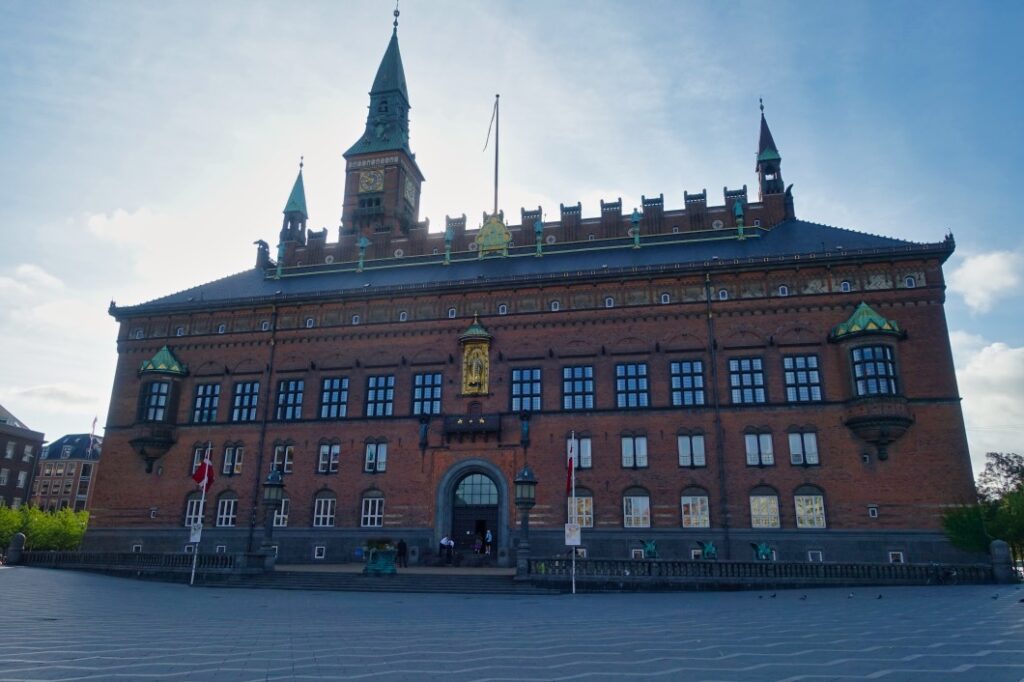
There are many interesting buildings around the square, but I only had an eye for the town hall. It was built between 1892 and 1905.
The town hall bell hangs in the 105.6 metre high tower of the town hall. The bell chimes every quarter of an hour from 8-24, is broadcast daily on Danish radio at 12 noon, and on New Year’s Eve the sound of the bell is even broadcast on Danish television.
I find the beautiful brick façade with the “appearance balcony” particularly beautiful. Here, not only the royal family, but also athletes and other interesting personalities step out to be cheered.
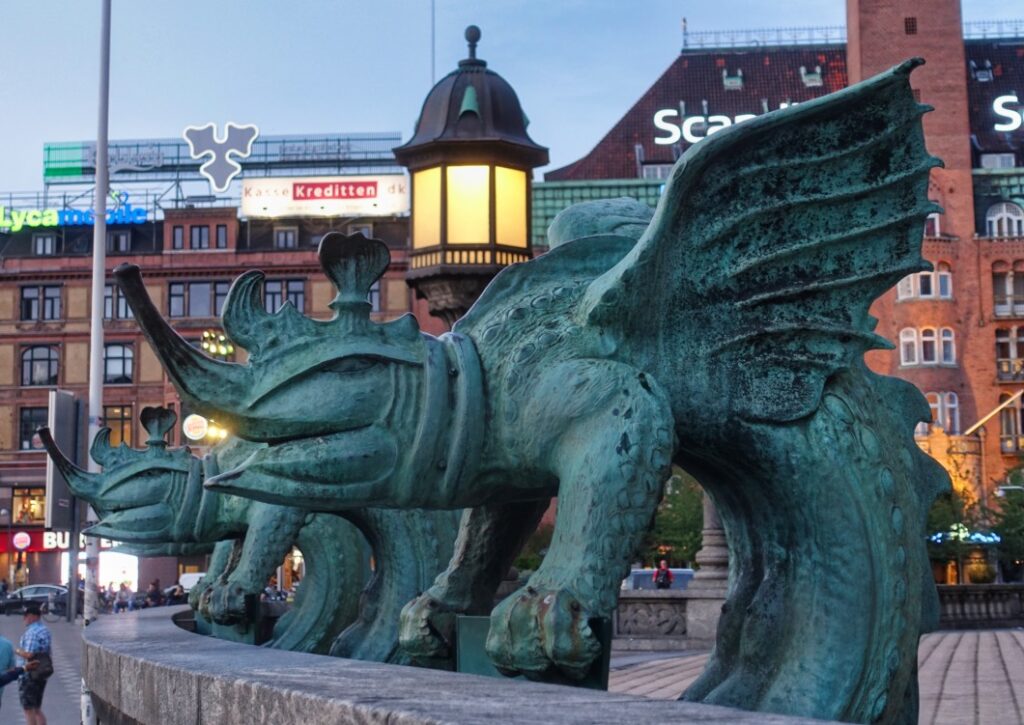
In front of the town hall there are some strange fellows who look like sentries to me. Yes, and just a few steps further on, on H.C. Andersen’s Boulevard, I discover the statue of Hans Christian Andersen – one of my favourite fairy-tale authors.
From Rådhuspladsen we continue walking through one of the longest pedestrian streets in Europe, Vesterbrogade and Strøg. Until we reach the Round Tower.
Rundetaarn, Rundetårn or Round Tower
Rundetårn, the Round Tower, is located in the city centre of Copenhagen. Today the tower is one of the city’s tourist attractions, but it was originally built for astronomical purposes.
We visited this tower and discovered Copenhagen from above.
Rosenborg Slot and Kongens Have
Our next destination on our “Copenhagen on foot” tour, Rosenborg Castle on the edge of the royal garden Kongens Have.
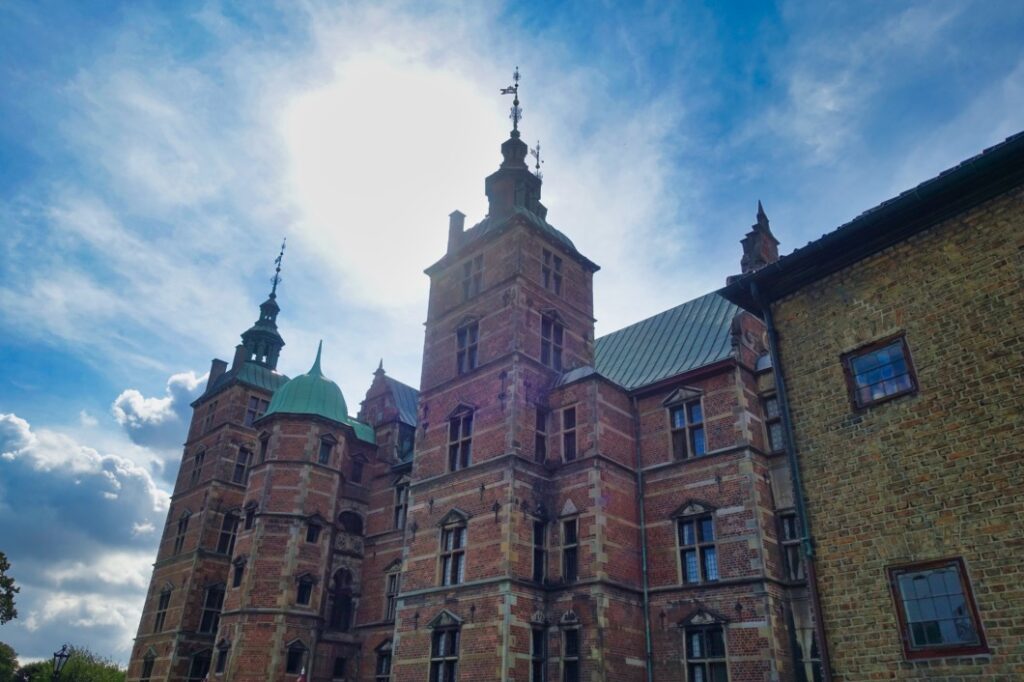
In 1606, Christian IV. In 1606, Christian IV acquired some land in front of the city’s ramparts to create a pleasure and kitchen garden. A little later, a two-storey summer house was built, which was extended over the years until it reached its present form in 1634.
First we stroll through the royal garden, which today looks more like an ornamental garden than a kitchen garden. Not only tourists, but also many groups of children took advantage of the beautiful weather for a trip to the garden.
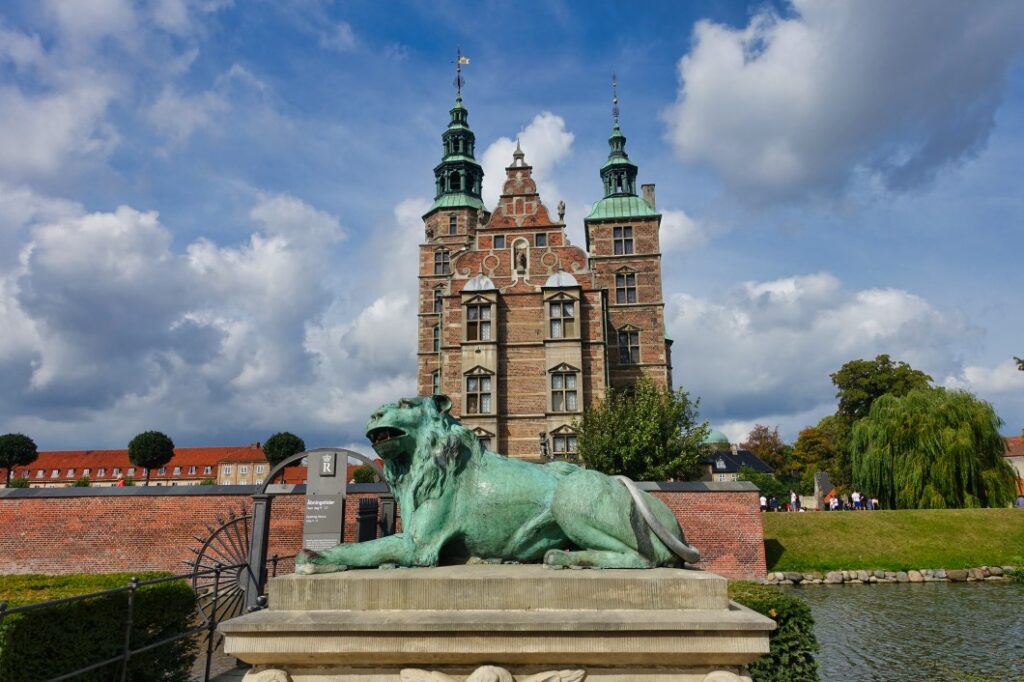
A small bridge leads to Rosenborg Castle. Here you can visit a museum or simply enjoy the impressions around the castle.
Address:
Rosenborg Slot and Kongens Have
Entrance: Øster Voldgade 4a , Gothersgade, Sølvgade and Kronprinsessegade
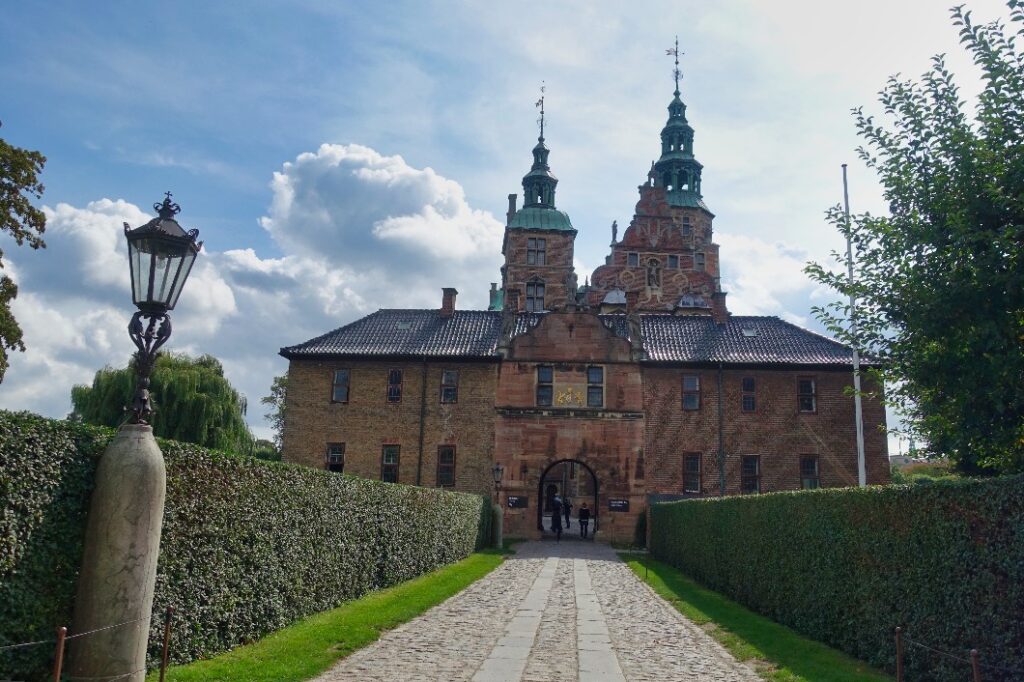
Opening hours:
Summer: 8.30 – 18 h
Winter: 8.30 – 16 h
Opening hours may vary on some public holidays, school holidays and other days.
Admission fees:
Adults: 125,-DKK (Museum)
Website
Visiting the garden is free of charge.
Kastellet
After a few minutes’ walk, you reach Copenhagen Castle. If you look at the city map, you will see that the fortress from 1667 still has the regular shape of a pentagon. I was curious to see whether this would also be perceived on site.
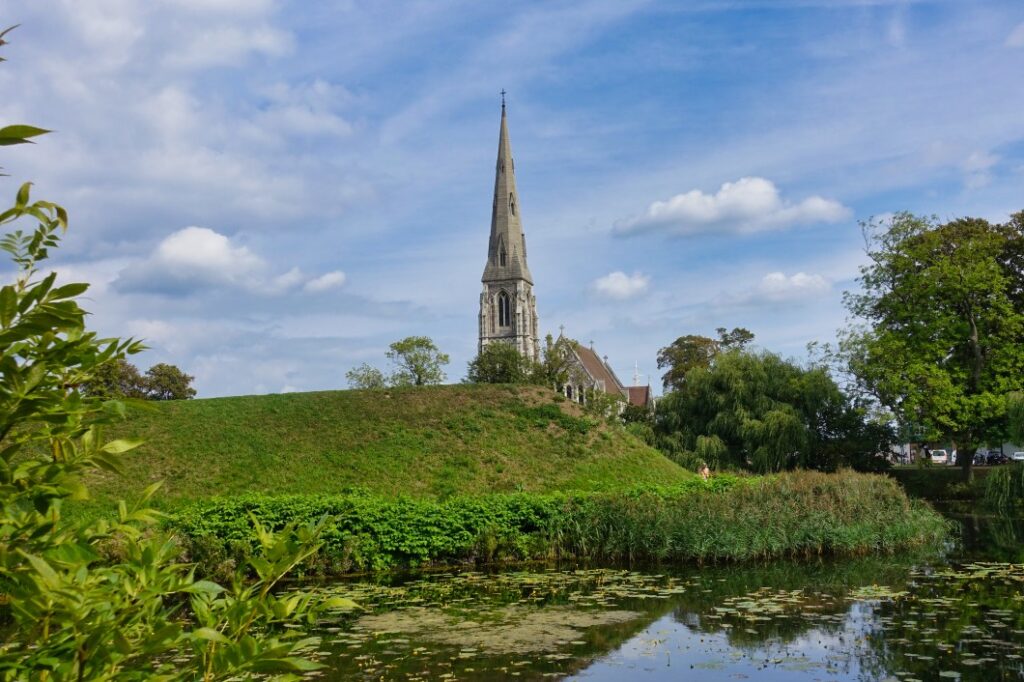
We reached the site and even from the outside we could see the old ramparts and bastions. Looking across the moat, we discovered the beautiful St. Albans Church.
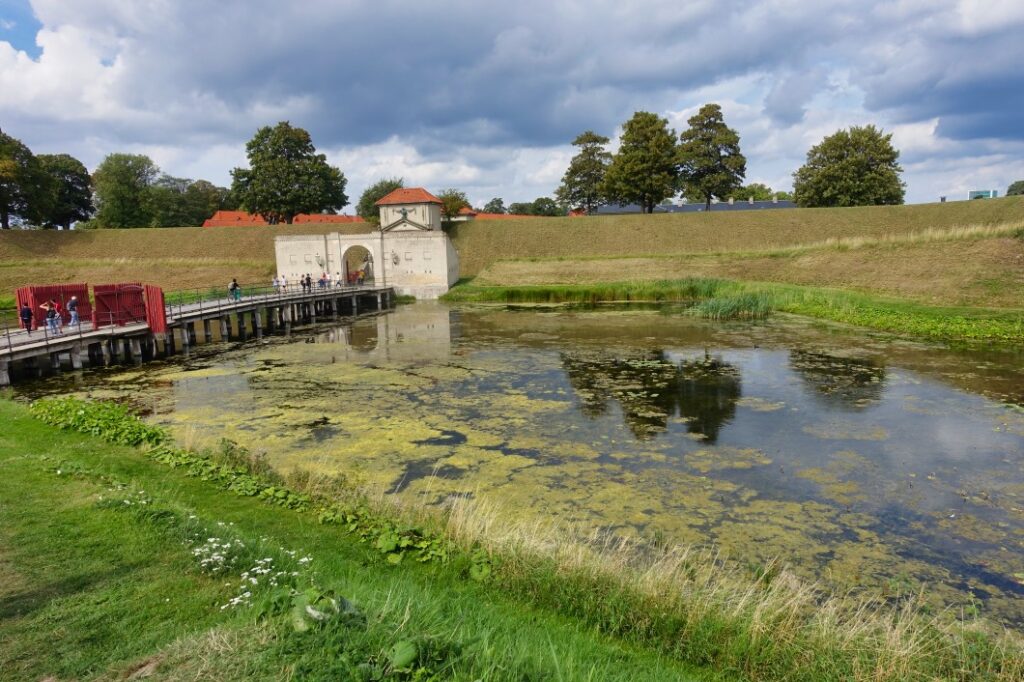
Then you enter the fort via a footbridge. You can cross the building via cobblestone paths. Passing rows of red houses and the commandant’s house, you finally reach a gate that should take you directly to the next place on our “Copenhagen on foot” tour.
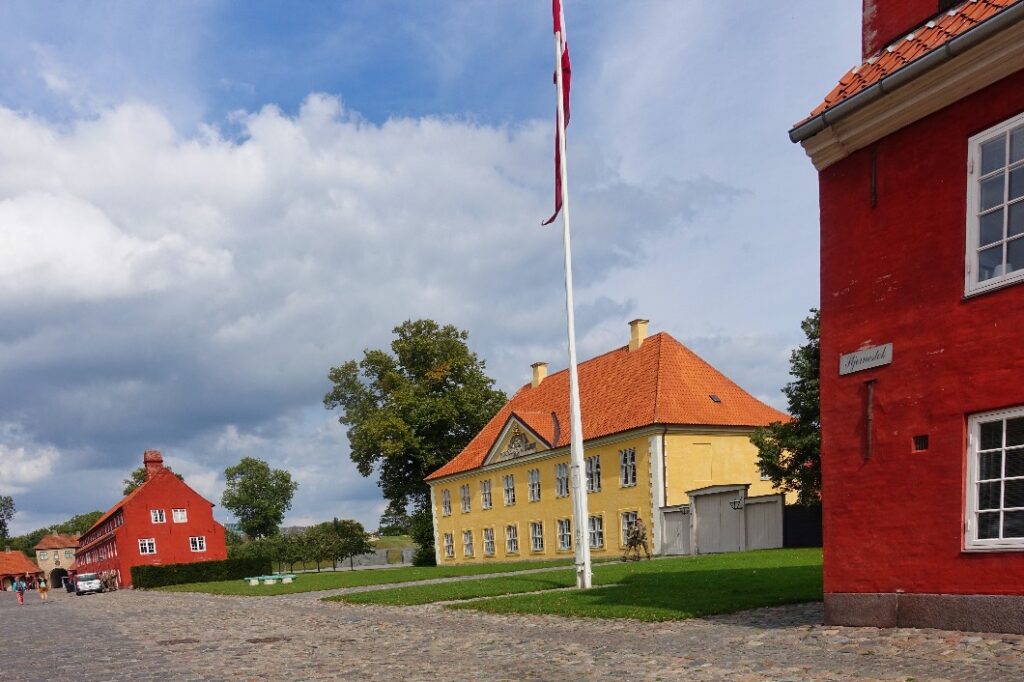
Den lille Havfrue – Little Mermaid
The focal point of thousands of tourists every day is the bronze figure of the Little Mermaid. I was very curious to see the figure, which is located directly on the Langelinie promenade in Copenhagen.
As you would expect – it was packed! Tour buses stopped in the immediate vicinity, tourists jumped out of the buses, ran to the figure, took a photo and disappeared again. Some tried to take a picture of the mermaid and themselves, but you had to push cleverly to even get a chance.
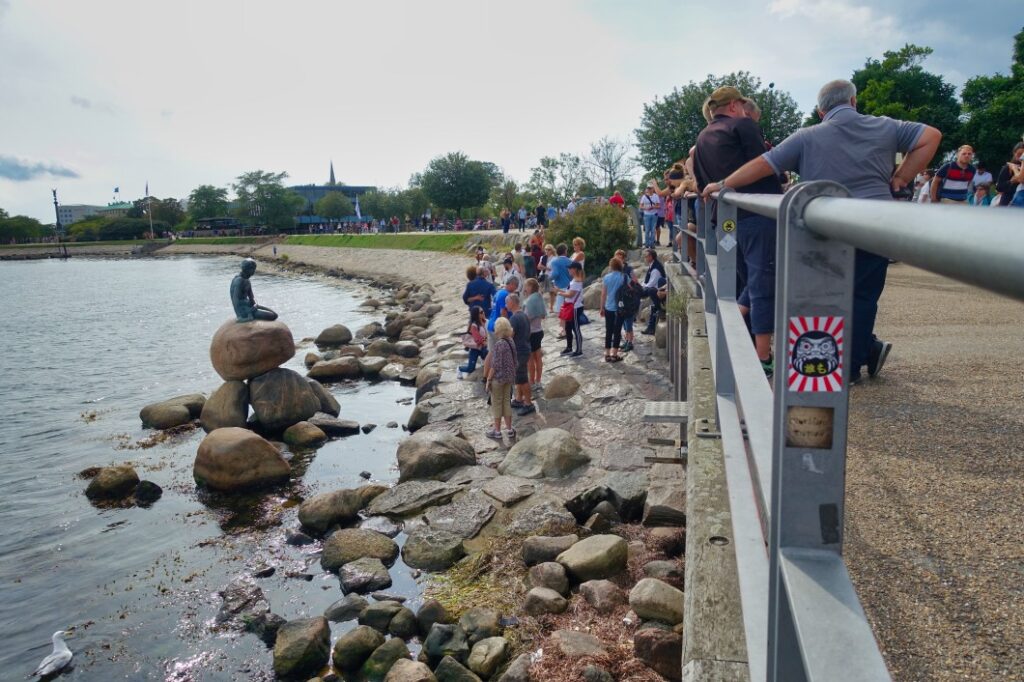
The Danish poet Hans Christian Andersen wrote the fairy tale “The Little Mermaid” and a sculptor from Copenhagen created the seated sculpture based on this story in 1913. The figure is just 125 cm tall and is one of the smallest landmarks in the world.
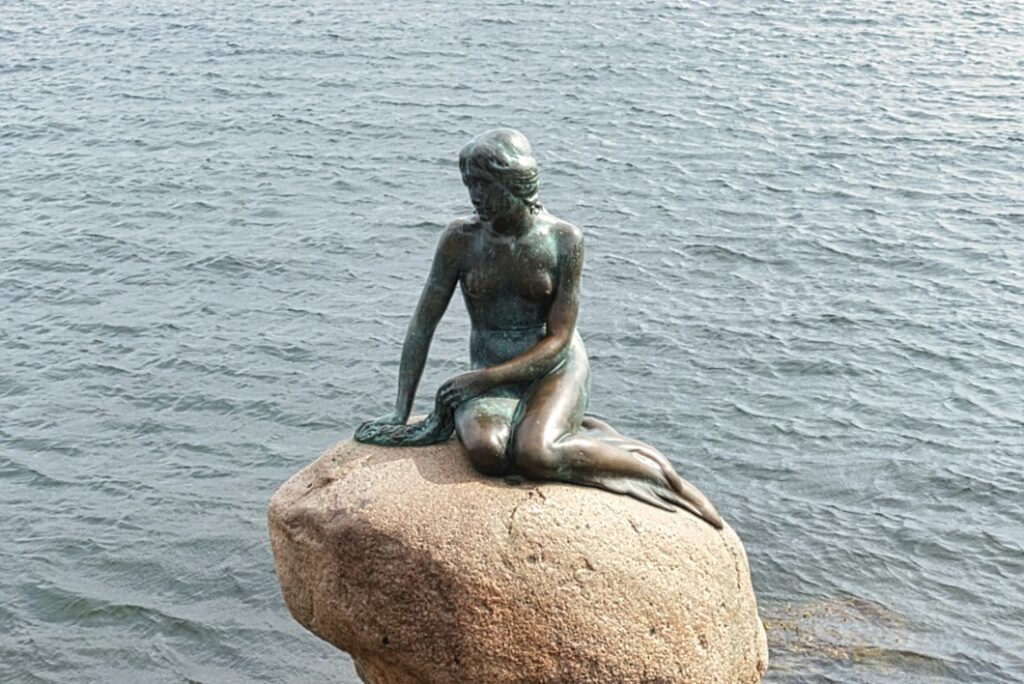
While I was watching the hustle and bustle around the mermaid, I remembered a legend I heard in Warsaw. The little mermaid had a sister. When they separated in the Baltic Sea, one swam to Copenhagen and the other to Warsaw. Today, you can also find a mermaid everywhere as a landmark there.
Amalienborg Slot
The city residence of the Danish Queen is Amalienborg Palace. Around an octagonal square are four palaces that form the palace ensemble. In the centre of the square is the equestrian statue of Frederick V.
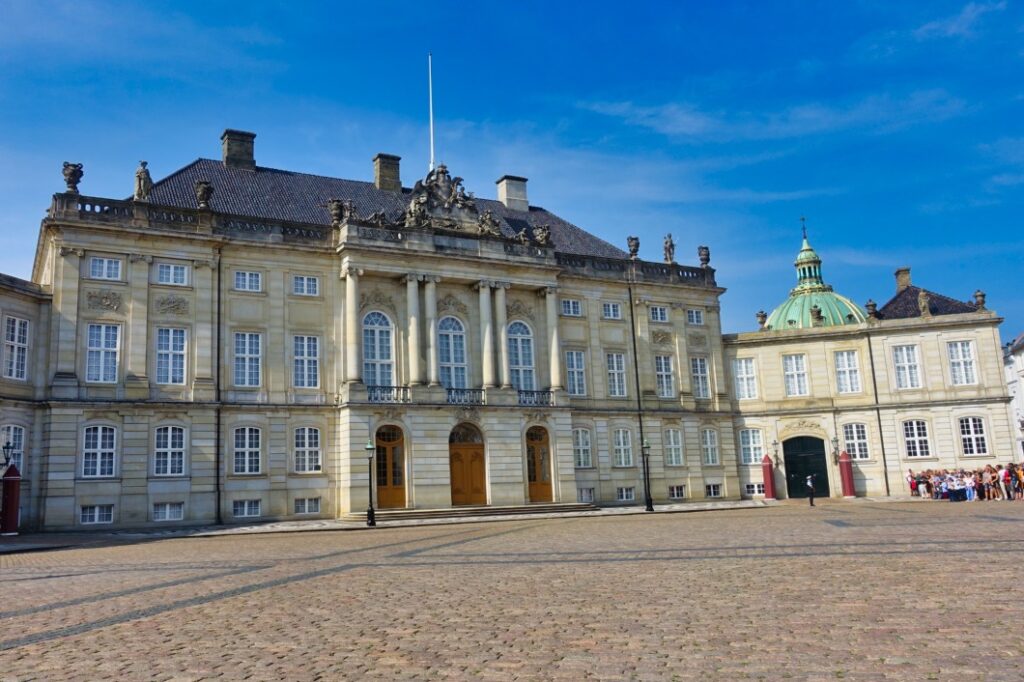
When the royal family is in their estate, the standard is hoisted. At 12 noon the changing of the guard takes place in front of the castle.
When we arrived, the square was already bustling with activity. Some policemen cordoned off areas and the visitors gathered in front of a gate. Curious, I joined them and waited to see what would happen.
Then, right on time, the guards of the Kongelige Livgarde (Royal Life Guard) marched up. They wear bearskin caps and carry the guard sabre. The ceremony of the changing of the guard is very lengthy and I must admit I had hoped it would be a bit more snappy and peppy. But I found it rather boring, and many spectators must have felt the same way, because the square was visibly emptying.
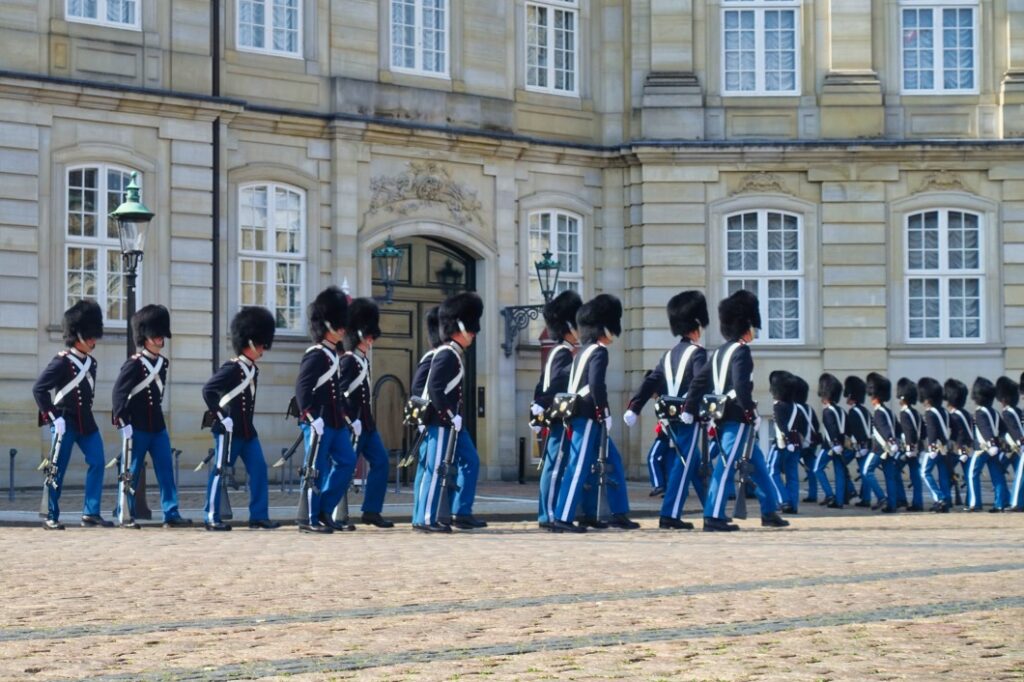
For us, our “Copenhagen on foot” tour continued. Frederiks Kirken stands in the direct line of sight from the castle square.
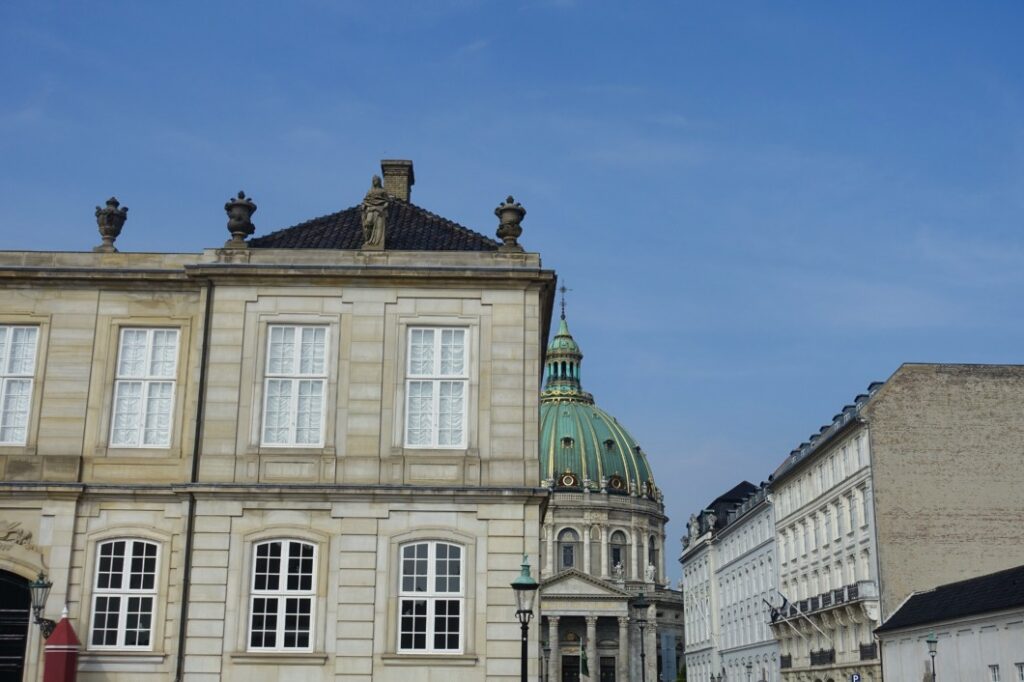
Frederiks Kirken – the marble church
The Danish Lutheran folk church Frederiks Kirken is particularly striking for its monumental dome. Frederik V laid the foundation stone in 1749 and demanded that the church be built in Norwegian marble. This overstretched the state budget and construction work stopped. For a long time the church was a ruin. In 1874, the state sold the ruins to an investor. The investor was obliged to complete the building according to the old plans and then return it to the state. In return, he received the rights to the neighbouring properties.
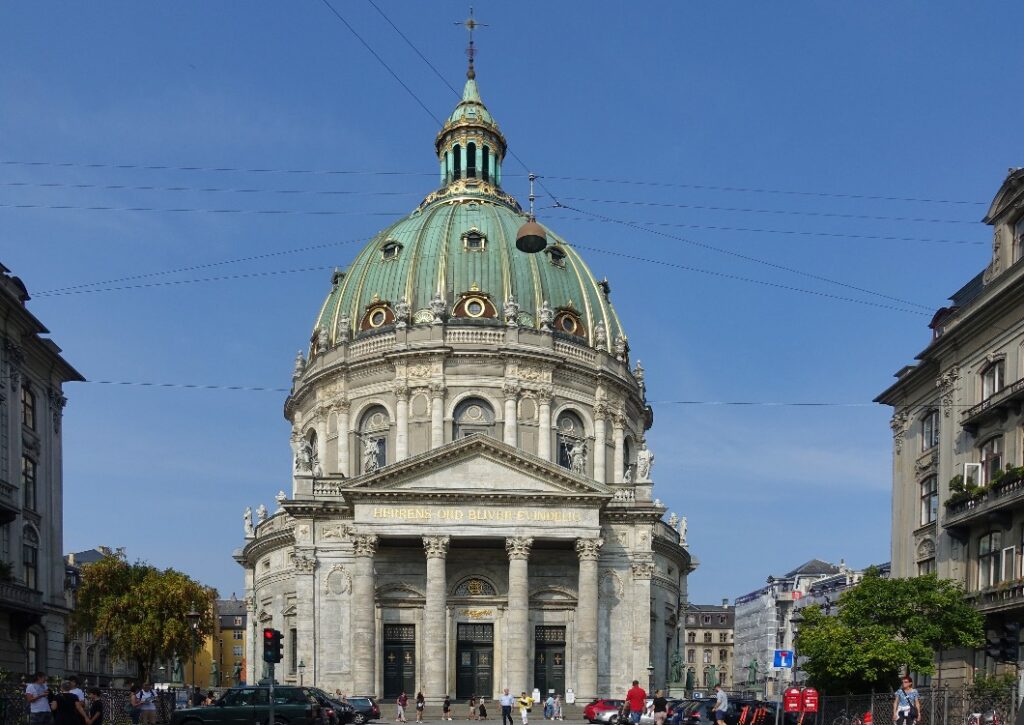
A visit to the church is really worthwhile. The dome is beautiful and there are lots of works of art to discover. But you shouldn’t miss the walk around the church either. I really liked the statues standing around.
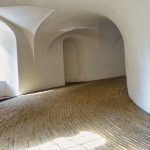
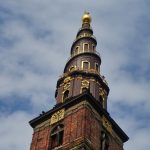
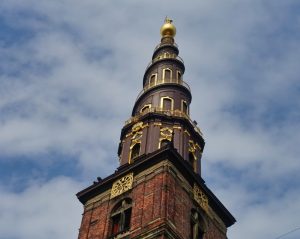
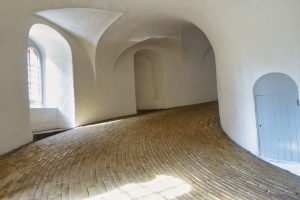
Leave a Reply